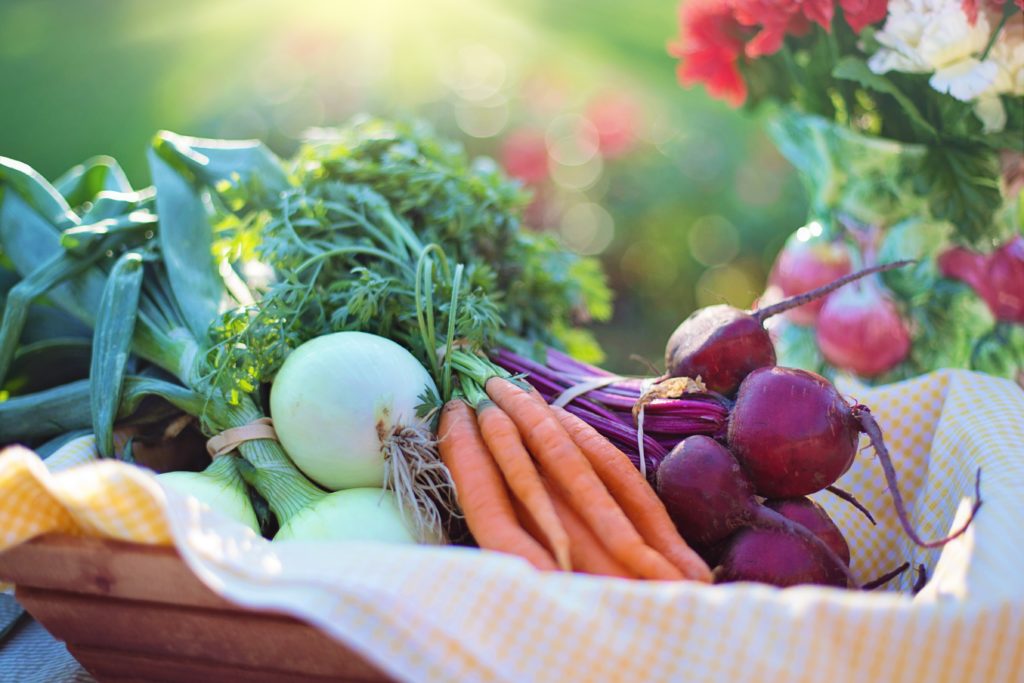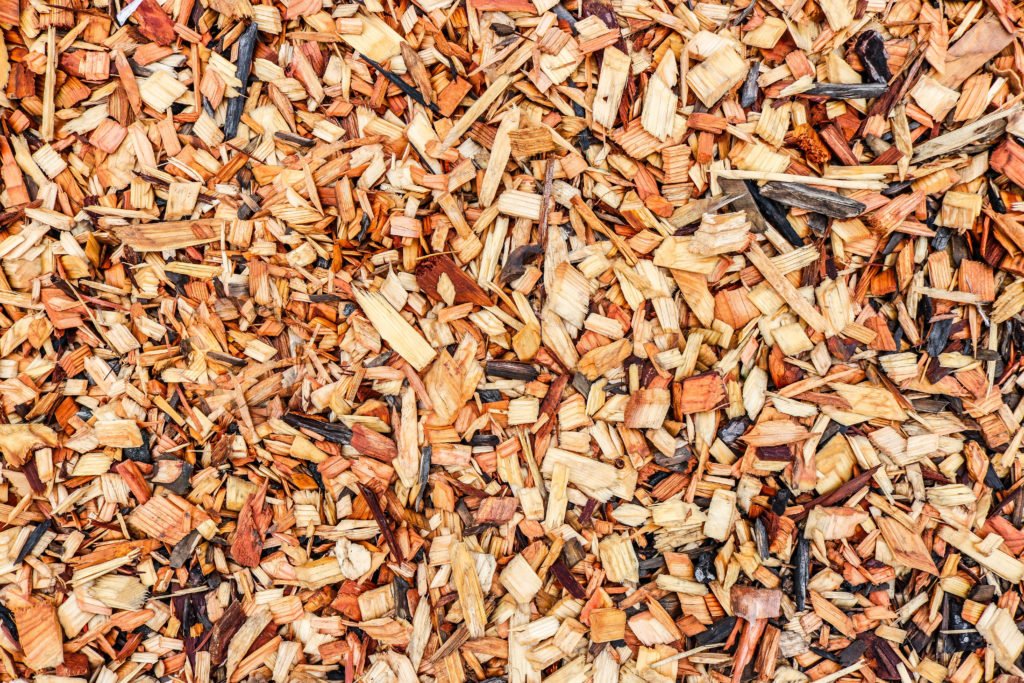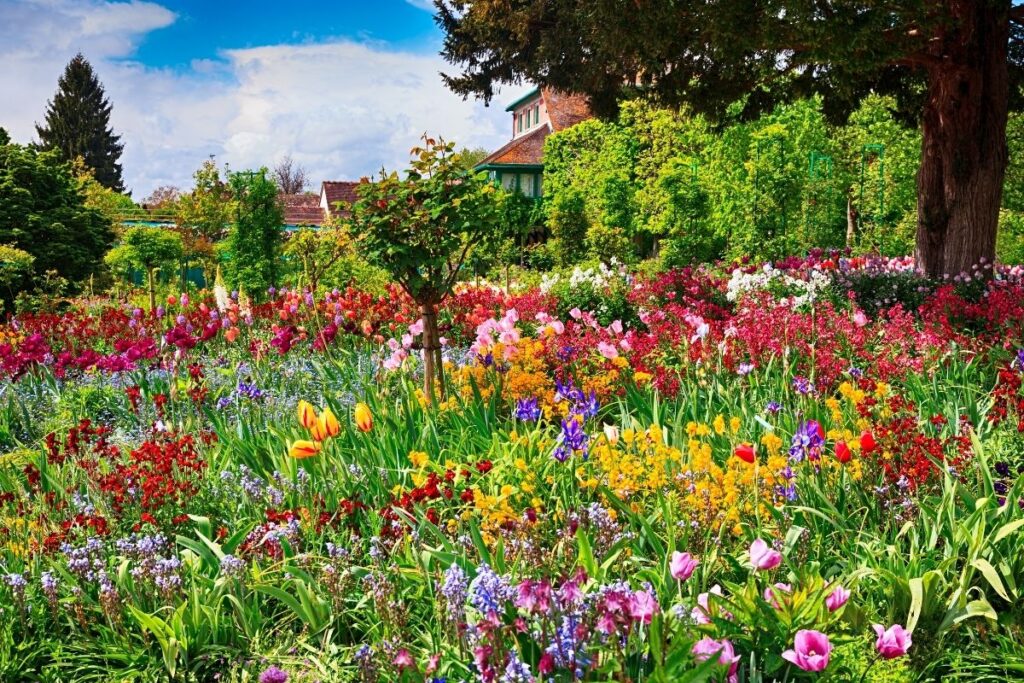Growing raspberries is actually rather simple. One fruit producing plant will provide an abundance of riches for the growing season, leaving you with bushels of yummy goodness.
If you’re following a low carb or keto diet, then you’ll be happy to know that raspberries are one of the few fruits that are keto-friendly!!
Similar to growing Blackberries, raspberries produce floricanes and primocanes, which represent the different stages of growth.
Floricanes are the second-year growth cane of the plant that will bear the most fruit. It will begin as a primocane, a dark, bark-colored stalk, that will then go dormant in the winter. Once the spring season rolls around and the plant starts to produce, it becomes a floricane.
Once a floricane produces fruit for the season, it dies and then needs to be pruned off the base of the plant.
This cycle of first-year primocanes, growing into second year floricanes, and then removing spent canes, keeps the plant lifecycle healthy and flourishing.
First, you need to determine whether you are going to grow a Summer Bearing or Everbearing Raspberry plant.
Summer Bearing
Summer bearing raspberries will only grow one crop per season. It’s one and done until next year! Summer fruit is typically ripe by July and ready to be harvested then. You can also expect these types to produce in their second year.
Types of summer bearing Raspberry varieties:
- Boyne
- Cascade Delight
- Killarney
- Raspberry Shortcake
- Royalty
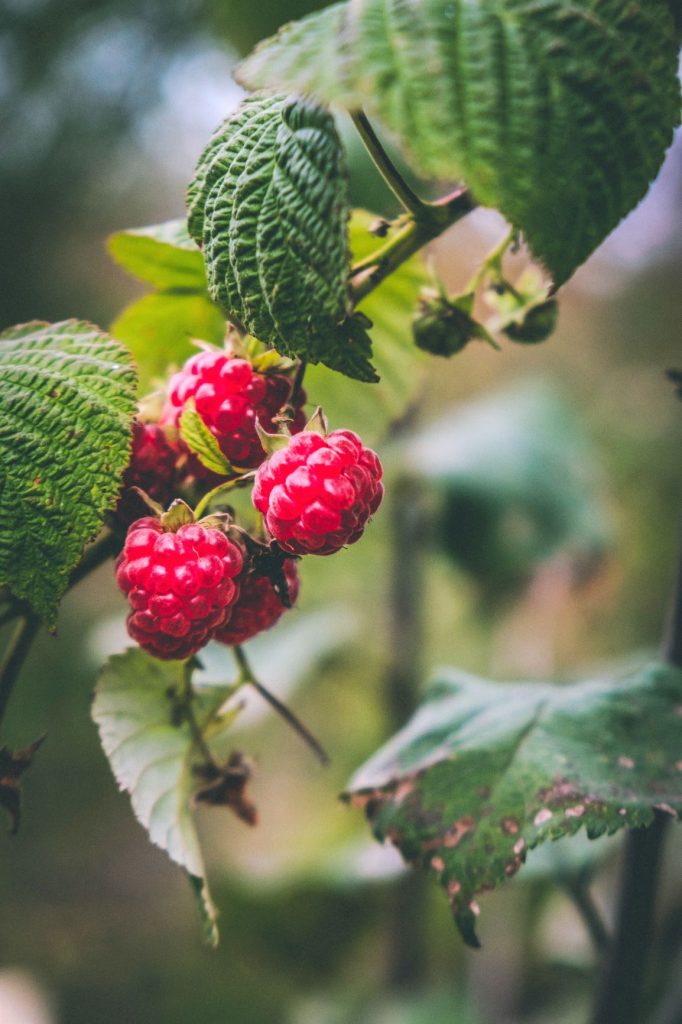
EverBearing
Everbearing varieties typically grow throughout the summer season. There are often two crops that grow heartily each season. One in early summer, typically around June. And another in late summer, which is usually larger than the first. Enjoy a season full of deliciously ripe red raspberries with this self-pollinating variety.
Types of everbearing Raspberry varieties:
- Heritage
- Sweet Repeat
- Fall Gold
- Redwing
- Caroline Red
When to Plant
You want to plant your disease-resistant, bare root plant, into the ground in early spring, right after the last frost.
Choose an area that will provide maximum sun exposure. The more sun the plant receives, the more fruit it will produce. You will still be able to grow raspberries if there is partial shade during the day, however it will not produce as much as if it were in full sun.
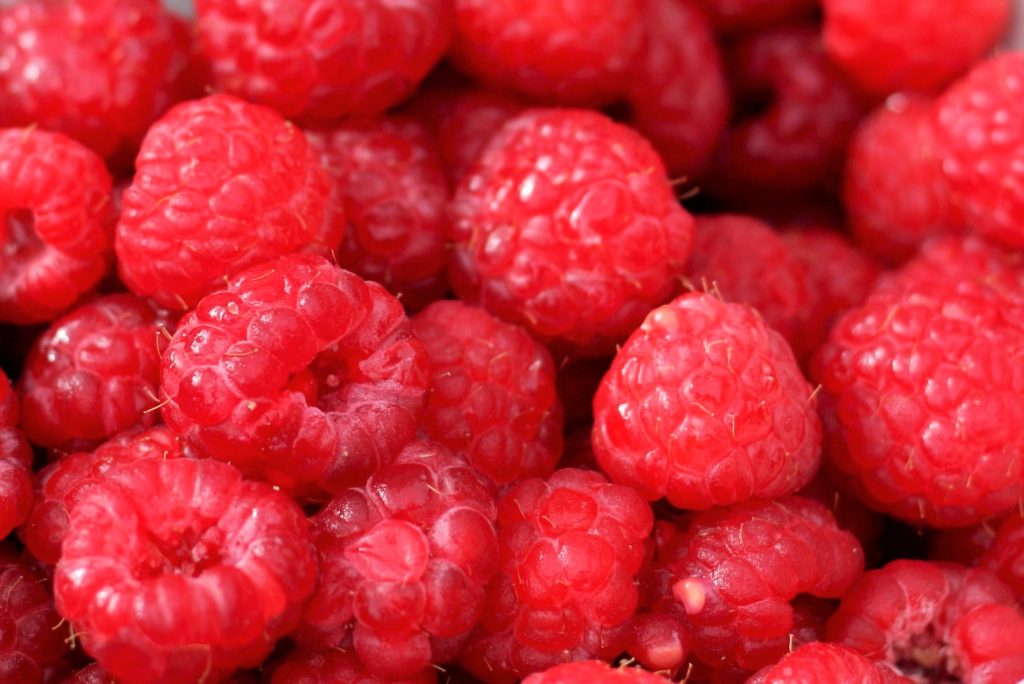
Be aware, however, that you may not see the biggest harvest your first year. You might get a few berries sprouting from your new plant however, it won’t be representative of its full potential. The second year of having the plant in the ground will be when you see the production volume!
Where to Grow
Typically, raspberries are adaptable to multiple zones and will produce at the height of your summer in zones 3-10.
If you are planning on planting or sowing directly into the ground, be sure to till the soil approximately 6-10 inches deep. You will need well-draining soil for optimal plant growth.
If you do not have loamy or somewhat sandy soil, you will want to add a small amount of gravel or sand to your existing soil to allow for better drainage.
To help your raspberry bush stay upright and strong, you will want to provide them with a trellis. This is especially important once the plant starts to bear fruit and becomes heavy. Setting up a trellis will support the weight of the heavy canes, keeping the fruit off the ground and easy to pick.
Best Organic Fertilizer for Raspberries
If you want your raspberry plants to grow as large and produce as many fruit as possible, using fertilizer is a must. Luckily you don’t need to spend too much time shopping around the garden department of the hardware store for organic fertilizers that will ensure healthy raspberry plant growth! (But if you do, a 10-10-10 fertilizer is a common choice for raspberries Dr. Earth Acid Lovers does wonders for all my berry plants!)
In fact, there is one simple ingredient that you might already have in your kitchen that can be used as a natural fertilizer for raspberries–and that’s coffee grounds!
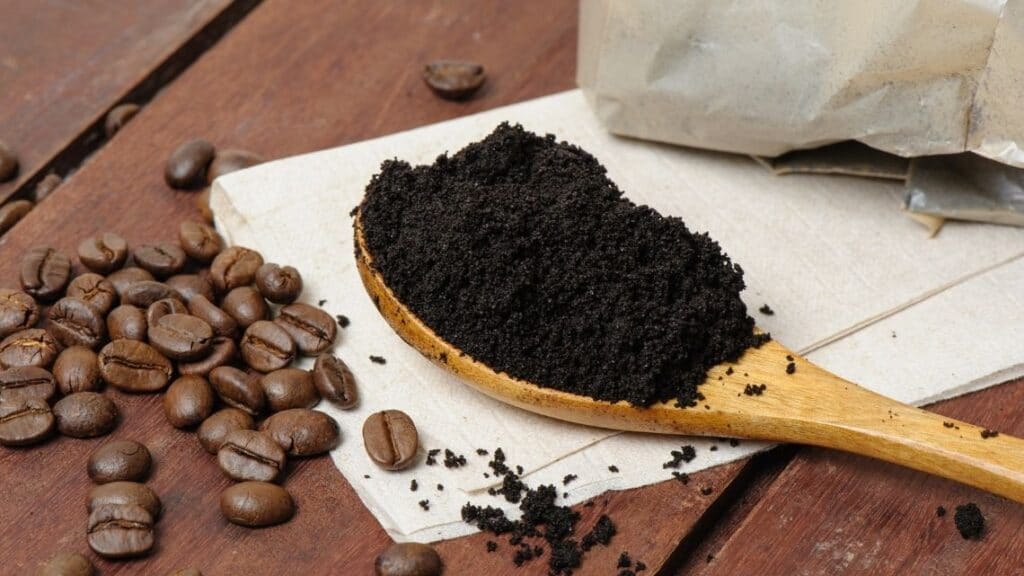
Coffee grounds are rich in nitrogen (a key element in the process known as photosynthesis) which encourages healthy plant growth. Coffee grounds sldo contain calcium, potassium, and magnesium.
All you need to do is sprinkle freshly used coffee grounds straight out of your coffee or espresso machine. You can mix it into the top couple inches of soil, or just sprinkle them on top and go. Make sure you don’t use too many coffee grounds, or pile them up. The tiny particles may form a water-resistant barrier in your garden if they cling together.
You can also save any extra grounds in an airtight container and use it to fertilize your raspberry plants later, But don’t wait too long as they do tend to mold!)
Growing Raspberries in Containers
While raspberries aren’t necessarily climbing vines, they do grow runners underground. This promotes sprawl and you will see sprouts pop up around the area of your initial plant. Be prepared for the inevitable multiplication!
There are a few options you can explore to minimize spread. One of them is to grow raspberries in containers or pots. This contains the roots into one area and will prevent it from further spreading.
You can grow raspberries in pots the same way you would in the ground. This is also an ideal solution if you do not have ideal soil conditions.
Harvesting Your Raspberries
Once your raspberry plants begin producing fruit, it’s hard to keep up with the harvesting. How do you know when they’re ripe? When can you expect a harvest? And how can you best take advantage of your succulent berries before another crop comes in?
Jump on over to this article to learn everything there is to know about harvesting raspberries at their peak, how to store them and ideas for recipes.
Pruning Raspberry Bushes
Although you might not have thought about it before, raspberries are unique in that they grow on canes. They’re not like tomatoes, which grow on vines. That means it’s critical to prune raspberry plants so they grow healthy, produce fruit year after year, and look attractive in your garden. You definitely want to prune your plant to keep it healthy and maintained
Firstly, regardless of the type of bush you have, you will always want to prune back the second-year canes. These will be drier, darker and dead. Completely remove these from the plant every year..
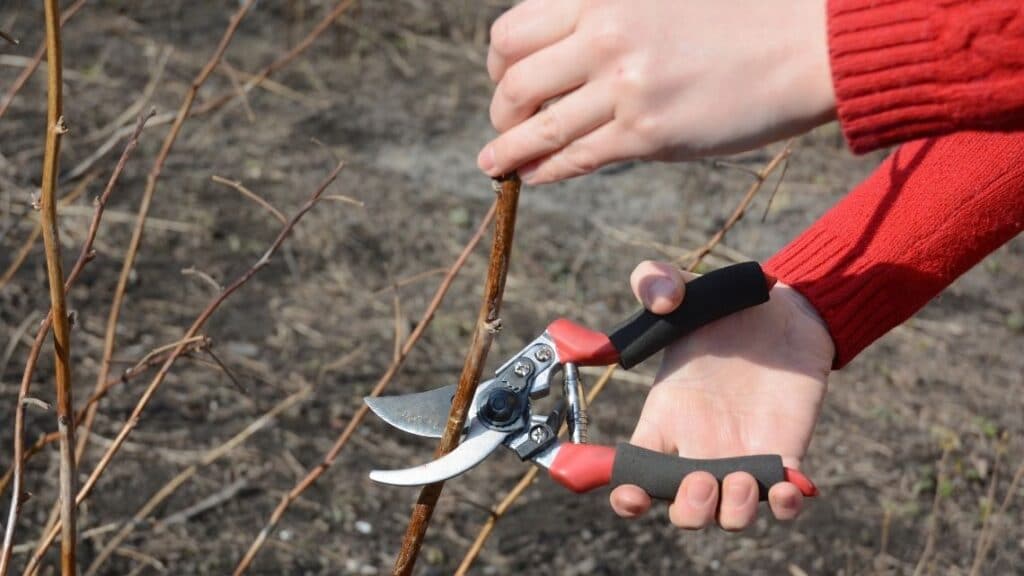
In most regions, it’s best to prune raspberry plants during the winter and early spring before new growth starts. Pruning earlier will not necessarily stimulate more growth; however, leaving them un-pruned until later can result in less fruit production as your primocanes die off. Pruning at this time gives you the greatest chance of removing suckers (primocane sprouts) without cutting into live canes that may still be producing fruit.
Next, you’ll want to trim the first-year canes slightly. If your raspberries are particularly overgrown and messy looking, it’s not a bad idea to prune them in the summer as you’re weeding and watering. Just be sure to leave some green growth on each cane so that they’ll continue to produce for the rest of the season!
Some folks tend to prune too far back, almost to the ground. While this isn’t the worst thing that could happen, it will prevent everbearing raspberries from producing their first, earlier crop, and instead only produce in the late summer.
Trim back those first-year canes so they are about a foot or two from the ground, depending on how big your bush is.
Articles You’ll Love:

